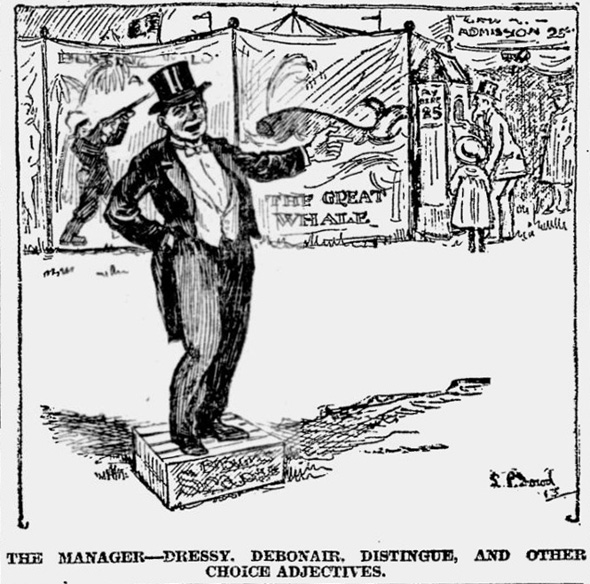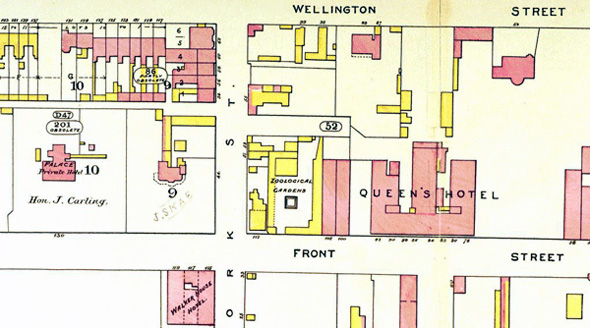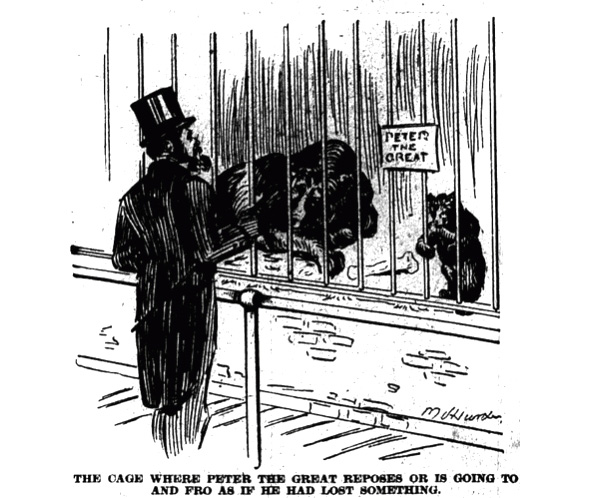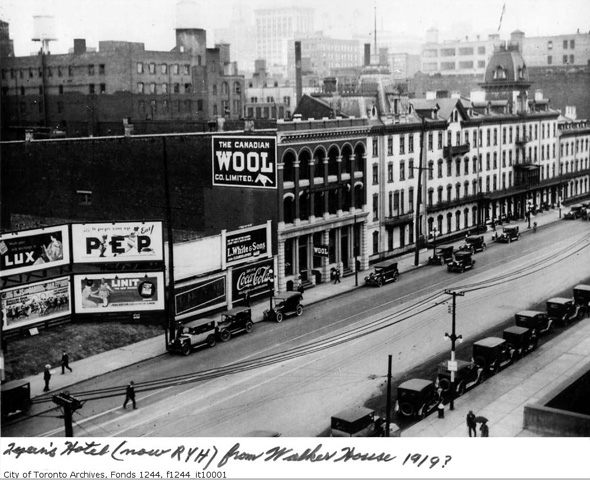
The history of the Front St. zoo in Toronto
In the 1980s, while working in a trench for the new streetcar subway at Front and Bay streets, Joe Resendes unearthed something extraordinary in the ground.
Over the years all manner of junk was tossed into Lake Ontario as landfill, extending Toronto's shoreline more than a kilometre south, but what Resendes pulled from the earth was completely unexpected: a well-preserved, slightly dirty section of whale vertebra.
The remains of a saltwater mammal near the bottom of a freshwater lake threw up all kinds of possibilities.
Could we have been wrong about the history of the continent? Were there once pods of whales cruising what is now the great lakes? The answer, it turns out, is no. You don't need to go back millenniums to hear the story of Toronto's first whale.

A sign promoting the Great Whale at the Front St. Zoo in Toronto.
The son of a prominent Yonge St. businessman, the entrepreneurial Harry L. Piper was an inspector at the Department of Inland Revenue when he decided to establish an animal show in a disused building on Old Post Office Lane near Toronto Street.
After acquiring several monkeys, bears and raccoons, the building opened for business and was an immediate success.
The number of animals in the show rapidly outgrew the building and wore out the welcome of the neighbours who began to complain about the noise and smell.
With several other local worthies, Piper became part of the newly formed "Zoological and Acclimatization Society" and acquired a new location for Toronto's first zoo on a tree-lined vacant lot at the corner of Front and York, two doors down from the Queen's Hotel, the site now occupied by the Royal York.
Piper's Zoological Gardens was established in 1881 and many prominent citizens attended the grand opening.
Inside visitors could see "Peter the Great," a large brown bear bought from Central Park Zoo, two lions named "Romeo" and "Juliet" and a pair of elephants called "Sir John" and "Laurier." More bears, a tiger, a leopard, and several species of bird joined the menagerie soon after.

A map of downtown Toronto showing the location of the zoo.
The zoo's popularity among the locals attracted the attention of many visiting dignitaries staying at the Queen's Hotel down the street.
Princess Louise, the daughter of Queen Victoria, strolled around the grounds and commented on the "dilapidated and careworn" appearance of the zoo's tiger.
Piper suggested her brother, the Prince of Wales and later King Edward VII, donate a mating pair. From newspaper reports it seems the deal may have gone through.
Although there are no known photographs of the animals, stories abound from Piper's zoo. Peter the Great, the zoo's burly brown bear, was one of the more popular and fearsome attractions.

An illustration of Peter the Great at the Front St. zoo.
A regular visitor, identified by Piper only as "Thompson," was in the habit of reaching through the bars of the cage shared by several small bears to punch and antagonize the animals for entertainment.
One day, leaning into Peter the Great's cage for a bout, the bear simply reached out, grabbed Thompson's arm and crushed it in his jaws. Piper and other staff eventually managed to separate the flailing pair but not before Thompson had lost his arm.
Easily dwarfing Peter the Great, the most famous resident of Piper's Zoological Gardens, and the reason for this story, weighed 12 tons, measured 53 feet in length and was totally and utterly dead.
In 1881 the body of a whale washed up on the frigid Nova Scotia shore of the Northumberland Strait.
Catching wind of the discovery and sensing an opportunity, Piper quickly arranged a $3,000 loan to pay for the body to be packed in ice and shipped by train to Union Station.
As he later recalled, the noble creature was positioned facing west near the zoo's entrance with its mighty jaws propped open and its body encased in a house of ice.
People, as many as 20 at a time according to Piper, could stop for a shave and a photograph in the cavernous mouth of the "Captive Leviathan."
Despite pushing up the daisies, the whale was a huge hit and Piper earned over $5,000 from the increased attendance.

As you might expect, the stink from a slowly decomposing whale became a source of friction between the zoo and the surrounding businesses.
Competing petitions soon fought over relocating the animals. A solution arrived when the Piper bought a 10-year lease on a large plot of land west of the Exhibition Grounds.
The dead whale, the living animals and the rest of the enterprise were moved, expanded and taken over by the city as an educational institution.
The remains continued to be a reliable source of income for another five years. Ratepayers voted down the chance to make the zoo free of charge and it was decided to sell the business and relocate the animals.
The last of the bones and blubber went to High Park and were eventually lost to thieves and vandals. It seems at least part of it was tossed into the lake.
Harry Piper, who emigrated to New York after leaving the zoo, returned to Toronto during the first world war to locate the whale's bones to raise money for the Red Cross. Only the skull and a burned part of the lower jaw were ever found.
The vertebra recovered from the ground during the construction of the streetcar tunnel is the only known surviving part of Piper's whale. The rest is presumably out there waiting to be rediscovered.
Harry Piper died in 1921 but his legend continues to live on in the name of Piper Street, the road running behind the Royal York today.
Writing by Chris Bateman.
Image credits (in order): Toronto Daily Mail April 1882, Portrait of Harry Piper The Toronto Sunday World Feb 1913, Zoo location 1884 Goad's Fire Atlas, Peter The Great Illustration Toronto World Feb 1913, site of zoo north side of Front and York 1919.
Special thanks to David Wencer for use of the photos (and for tracking them down in the first place)
Latest Videos
Latest Videos
Join the conversation Load comments







